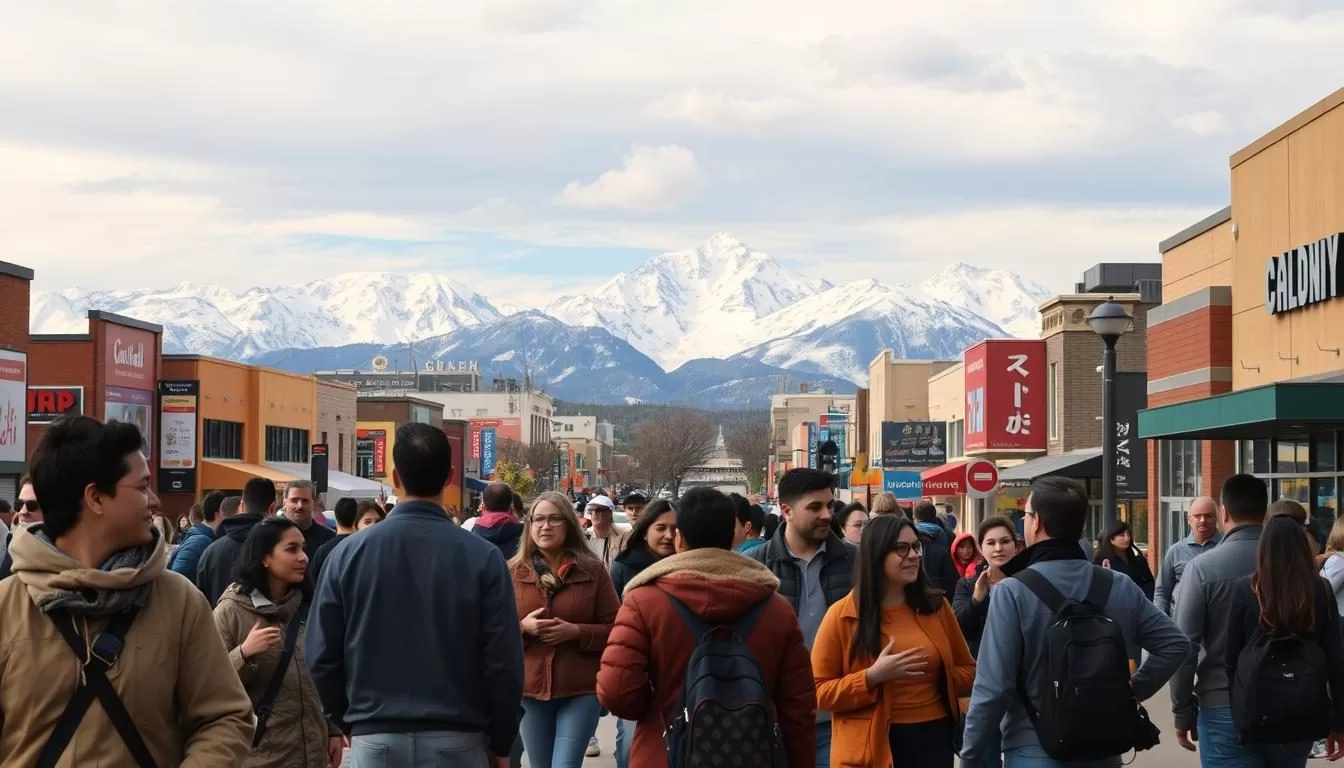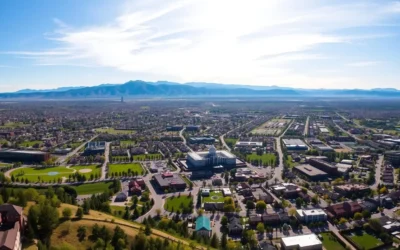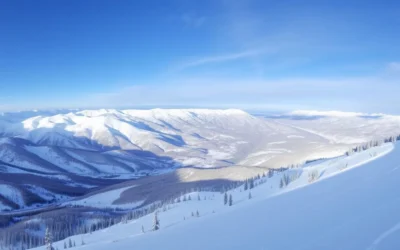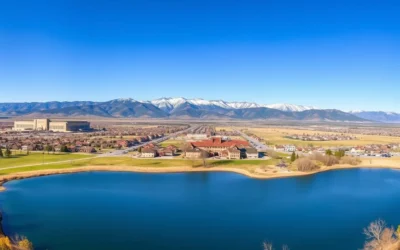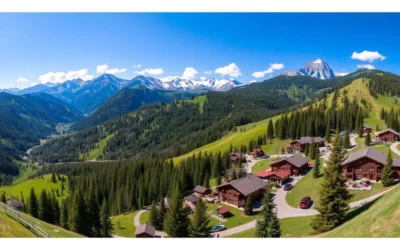✓ Accommodations ✓ Flights ✓ Rental Cars
When you think of language diversity in the United States, you might not immediately consider the state of Colorado. However, the state’s linguistic landscape is more complex than you might expect.
In 1988, a constitutional amendment made English the official language of Colorado. Yet, the state’s rich cultural heritage is reflected in its remarkable linguistic diversity.
Approximately 16.3% of Coloradans speak a non-English language at home, and 6.53% have limited English proficiency. This diversity is a result of centuries of migration, from indigenous populations to European settlers and recent immigrants.
Understanding the language dynamics in Colorado provides valuable insights into the state’s demographic composition and cultural heritage.
The Linguistic Landscape of Colorado
As you explore the diverse landscape of Colorado, you’ll discover a rich tapestry of languages that reflect the state’s cultural heritage.
The state’s linguistic profile is shaped by its history, geography, and demographics. English is the official language, but the presence of many other languages is a testament to the state’s diverse cultural landscape.

English as the Official Language
English is the predominant language in Colorado, used in most aspects of life, including government, education, and commerce. As the official language, it plays a crucial role in ensuring that residents can access essential services and information.
Language Diversity in the Centennial State
Despite English being the official language, Colorado is home to a diverse population that speaks many other languages. This diversity is reflected in the many languages spoken at home, in schools, and in communities across the state. Many people in Colorado come from different linguistic backgrounds, contributing to the state’s cultural richness.
Limited English Proficiency in Colorado
An estimated 6.53% of Colorado’s population, around 381,347 residents, have Limited English Proficiency (LEP). This can create barriers to accessing essential services and information. The challenges faced by LEP individuals are significant, affecting areas such as healthcare, education, and civic participation.
- Limited English Proficiency affects a significant portion of Colorado’s population, creating barriers to accessing essential services and information.
- LEP residents face unique challenges in healthcare, education, legal proceedings, and civic participation without adequate language support.
- Community organizations work to bridge language gaps by providing translation services, language classes, and cultural resources.
Colorado’s Immigration History and Language Evolution
As you explore the linguistic landscape of Colorado, you’ll discover how the state’s immigration history has shaped the languages spoken today.
Understanding the historical context of immigration is crucial to grasping the language diversity in Colorado. The state’s linguistic evolution can be traced through several key periods.
Indigenous Languages and Early Settlement
Initially, Colorado was inhabited by indigenous peoples, each with their own distinct language. The early settlement and subsequent immigration waves have contributed to the linguistic tapestry of the state.
European Immigration Waves
European immigration, particularly from Germany and other European countries, has played a significant role in shaping Colorado’s linguistic landscape. Many European languages were brought to the state during the late 19th and early 20th centuries.
Modern Immigration Patterns
In recent decades, Colorado has experienced significant immigration from Latin America and Asia. 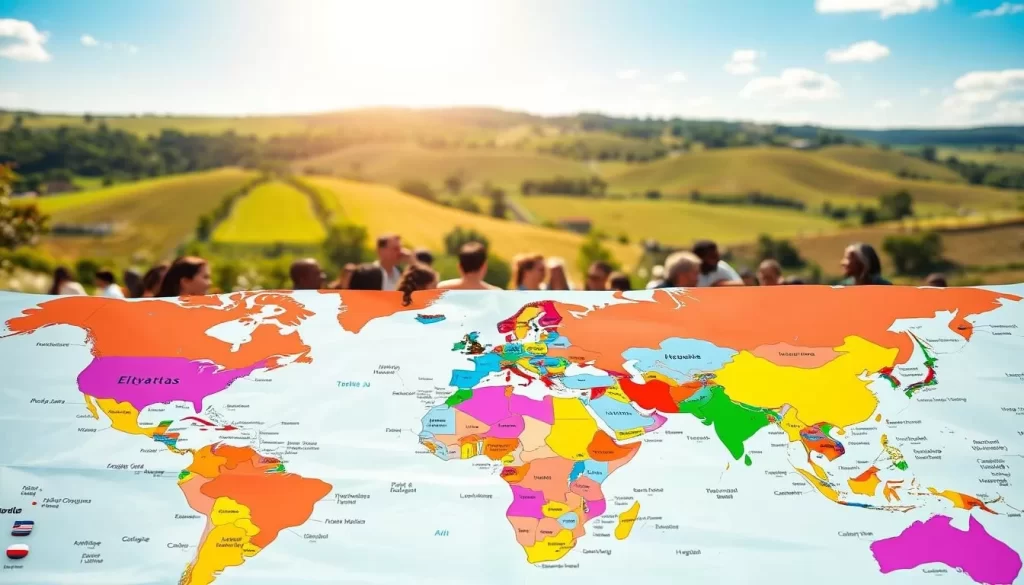 The latter half of the 20th century saw a substantial increase in Spanish-speaking populations, primarily from Mexico and Central America. More recently, economic opportunities in technology, healthcare, and education have attracted immigrants from Asia, Africa, and the Middle East.
The latter half of the 20th century saw a substantial increase in Spanish-speaking populations, primarily from Mexico and Central America. More recently, economic opportunities in technology, healthcare, and education have attracted immigrants from Asia, Africa, and the Middle East.
| Immigration Period | Primary Languages Introduced | Notable Communities |
|---|---|---|
| Indigenous Peoples | Various Indigenous Languages | Native American Communities |
| European Immigration | German, Other European Languages | German-American Communities |
| Modern Immigration | Spanish, Asian Languages, African Languages | Latinx, Asian, African Communities |
These modern immigration patterns have transformed Colorado into one of the more linguistically diverse states in the Mountain West region, with many speakers of languages other than English.
Colorado, United States: Official and Widely Spoken Languages Today
Colorado’s linguistic landscape is characterized by a rich tapestry of languages, reflecting its diverse community. As you explore the various languages spoken in the state, you’ll notice the significant role they play in shaping the cultural identity of Colorado.
Spanish
Spanish is one of the most widely spoken languages in Colorado, reflecting the state’s historical and cultural ties to Spanish-speaking countries. Many Coloradans speak Spanish at home, and it is commonly used in various aspects of life, including education, business, and community services. The presence of Spanish is evident in the state’s bilingual education programs and the prevalence of Spanish-language media.
Chinese (Cantonese and Mandarin)
Chinese, encompassing both Cantonese and Mandarin dialects, is another prominent language in Colorado. The Chinese community has a significant presence, with many Chinese cultural events and organizations. The language is maintained through community centers, cultural events, and family gatherings.

German
German is also spoken in Colorado, reflecting the state’s historical ties to German immigration. Many Coloradans of German descent continue to maintain their linguistic heritage through cultural events and family traditions.
Vietnamese
The Vietnamese community in Colorado has grown significantly, with Vietnamese being spoken in many households. Cultural organizations and community events help maintain the language and cultural heritage.
| Language | Estimated Speakers | Percentage of Population |
|---|---|---|
| Spanish | Large population | Significant percentage |
| Chinese (Cantonese and Mandarin) | Several thousand | Small but significant percentage |
| Tagalog | 8,379 | 0.16% |
French
French is spoken by a smaller but notable community in Colorado. The language is maintained through cultural events, educational programs, and community gatherings.
Amharic, Somali, and Other Afro-Asiatic Languages
Colorado is home to a diverse group of Afro-Asiatic language speakers, including Amharic and Somali. These languages are maintained through community efforts and cultural events.
Russian
Russian is spoken by a community of Coloradans, with many maintaining their linguistic heritage through cultural organizations and family gatherings.
Korean
The Korean community in Colorado is vibrant, with many speaking Korean at home and participating in cultural events.
Arabic
Arabic is spoken by a growing community in Colorado, with many maintaining their language through cultural and religious practices.
Tagalog
Tagalog, including Filipino, is spoken by an estimated 8,379 Coloradans, representing about 0.16% of the population. The Filipino American community is one of Colorado’s growing Asian American groups. Many Tagalog speakers work in healthcare, technology, and service industries. The community maintains its language and culture through cultural organizations, events, and family gatherings. Filipino cultural organizations host events that celebrate traditional Filipino celebrations, helping to maintain language connections. Tagalog is often preserved alongside English in Filipino American households, creating bilingual family environments. Churches and community centers provide important gathering places for Tagalog speakers.
Conclusion: The Future of Language Diversity in Colorado
The future of language diversity in Colorado is shaped by various factors, including immigration and technological advancements. As the state‘s population continues to grow and diversify, the importance of multilingualism is likely to grow. While English remains the official language, the people of Colorado will continue to speak a multitude of languages.
Language access services will become increasingly important as the population diversifies. Educational institutions will face challenges and opportunities in addressing the needs of multilingual students. Technology will continue to transform how language barriers are addressed, making communication more accessible.
Economic factors and policy decisions will also shape the linguistic diversity of the state. As Colorado’s industries attract workers from around the world, the language landscape will continue to evolve.
The above is subject to change.
Check back often to TRAVEL.COM for the latest travel tips and deals.
